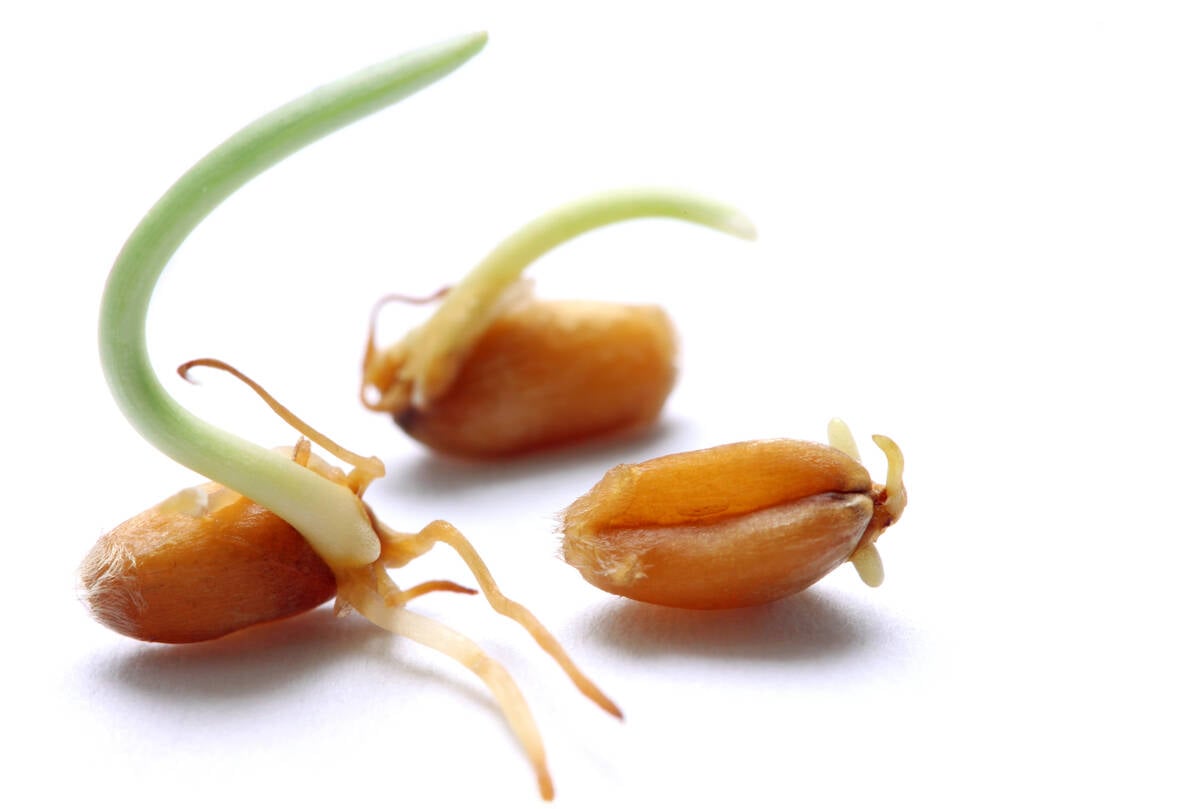RED DEER — Last year’s harvested problems could create this year’s harvest problems.
Late seeding during a cold wet spring and a delayed harvest last year resulted in dormancy, disease and frost damage in wheat, barley, oats and rye seed across the Prairies, Sarah Foster said at an international science conference in Red Deer.
A second year of late seeded crops combined with inconsistent germination from last season’s seed is creating uneven maturity in the 2011 cereal crop.
Read Also

Manitoba farmers fight sprouted wheat after rain
Rain in mid-September has led to wheat sprouting problems in some Manitoba farm fields.
Foster, who runs 20/20 Seed Laboratory in Nisku, Alta., said primary and secondary dormancy have been troubling.
Dormancy is a natural process that allows seeds to be stored, but it needs to break to grow a new crop. Often this happens in the bin over the winter, but not always.
Primary dormancy is caused by lack of seed maturity and can lead to decay. It also means grain won’t store well.
“We have to break it because once in a while we would find the dormancy would be caused by the immaturity, sometimes frost and sometimes chemical damage,” Foster said.
Pre-har vest applications of glyphosate on saved seed crops can add to the germination woes and dormancy issues.
Secondary dormancy is worse.
“The sad thing about secondary dormancy is that once it is in the ground, it does not come out of dormancy, ever,” she said.
Seeds in primary dormancy will eventually wake up, but different stages of growth could result in an uneven crop and late maturity.
Labs test 200 seeds for germination and will repeat the test if the seeds don’t sprout.
“Probably this year 30 percent of what we tested was retested due to secondary dormancy,” she said.
Growers may not realize secondary dormancy is present if a lab doesn’t test for it.
“This past year was one of the worst we have seen,” said Holly Gelech of BioVision Seed Labs in Edmonton.
BioVision found that 7.2 percent of wheat samples had five percent or more dormant seed. The worst case was 42 percent dormant.
Slightly more than two percent of the barley had more than five percent dormant seeds, and the worst case was 23 percent.
For oats, 5.75 percent had more than five percent dormant and 23 percent was the highest.
Ron DePauw of Agriculture Canada said seed immaturity at harvest was not the cause in last year’s samples because he has managed to germinate them. However, he agreed last year’s conditions could be responsible.
“Last year it matured under very cool conditions, which is atypical,” he said.
Frost and chemical damage also appear linked to dormancy. Seeds could be damaged and possibly become dormant if farmers used glyphosate to dry crops before harvest.
It is important to break dormancy at the lab because the problem can mask other problems such as fungi, frost and chemical damage.
The seeds are likely dead if there are no sprouts, but they tend to be black or darker in colour and moisture may be coming out of the growing point of the seed.
If not broken in the bin, extreme dormancy may linger into spring when it is time to plant.
Lab clients who have seed that does not germinate need an explanation and information on what they can do about it.
“We have managed to educate a lot of clients about what happens in stressful conditions rather than the optimum,” Foster said.
She knows that farmers want to make an early start but recommends that soil temperatures at seeding should be at least 5 C for wheat and 6 C for barley. One degree can make a difference at seeding time.
“It is usually temperature that has the biggest impact on how seed will grow in most of our vigour tests and it is one that we can most easily explain,” Foster said.















